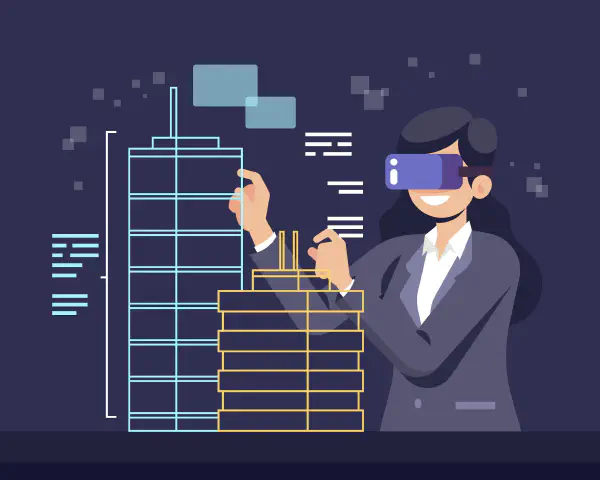
The world of technology is ever-evolving, and two fields that have gained significant attention in recent years are Augmented Reality (AR) and Virtual Reality (VR). These immersive technologies offer users the opportunity to step into digitally created worlds or enhance their real-world experiences with computer-generated elements.
But what often goes unnoticed is the pivotal role of image processing in making these experiences seamless and interactive. In this blog, we’ll delve into how image processing is utilized in AR and VR applications, and we’ll explore how this technology is also making waves in the realm of robotics.
Understanding Augmented Reality and Virtual Reality
Before we dive into the role of image processing, let’s briefly differentiate between AR and VR:
- Augmented Reality (AR)
- AR blends computer-generated content with the real world. Through AR, users can see digital elements superimposed onto their physical surroundings. This technology has numerous applications, from gaming and marketing to healthcare and education.
- Virtual Reality (VR)
- VR, on the other hand, creates entirely immersive, computer-generated environments that users can explore. By wearing VR headsets, individuals are transported to simulated worlds where they can interact with the environment and objects.
The Role of Image Processing in AR and VR
The seamless integration of digital content with the real world is where image processing takes center stage in AR applications. Let’s take a closer look at how it accomplishes this:
- Object Recognition and Tracking
- Image processing algorithms can identify and track objects in the real world. This is crucial in AR applications as it enables the overlay of digital information onto these recognized objects. For example, AR apps can recognize a printed advertisement and superimpose a 3D model or video when the user points their smartphone at it.
- Real-time Image Rendering
- In VR, image processing plays a significant role in creating realistic and immersive environments. It’s responsible for rendering high-quality 3D images in real-time, ensuring that the user’s experience is smooth and visually appealing.
- Depth Sensing
- AR and VR often require an understanding of depth and spatial relationships. Image processing techniques, such as depth mapping and stereo vision, help devices perceive the three-dimensional world, allowing for more accurate placement of virtual objects within the user’s view.
- Image Stabilization
- To prevent motion sickness in VR, image processing is used to stabilize the visual content as the user moves their head. This is achieved through techniques like gyroscopic sensor data processing and real-time adjustment of the displayed images.
AR and VR in Robotics: Enhancing Perception and Interaction
Image processing is not limited to just AR and VR for consumer applications. It also has a significant role in the realm of robotics, where AR and VR technologies are leveraged to enhance a robot’s perception and interaction with its environment.
- Robot Vision
- Robots equipped with cameras and sensors use image processing to understand their surroundings. This enables them to identify objects, people, and obstacles, making them capable of more advanced tasks, such as object manipulation and navigation.
- Human-Robot Interaction
- AR technology can be used to enhance human-robot interaction. By overlaying digital information on the real world, robots can provide users with helpful guidance or information during tasks like assembly or maintenance.
- Training and Simulation
- VR is used to create realistic virtual environments for training robots. This allows developers to test and train robots in various scenarios without the need for physical setups.
Conclusion
Augmented Reality and Virtual Reality are transforming the way we interact with digital content and experience the world around us. Image processing is the backbone of these technologies, ensuring that virtual and real elements seamlessly coexist. Additionally, image processing is revolutionizing the field of robotics, enabling robots to perceive and interact with the world as never before. As technology continues to advance, we can only imagine the exciting new applications and innovations that lie ahead in these converging fields. AR, VR, and image processing are changing the way we perceive and interact with the world, whether for entertainment, education, healthcare, or even in the world of robotics. The future is indeed looking more augmented and virtual than ever.